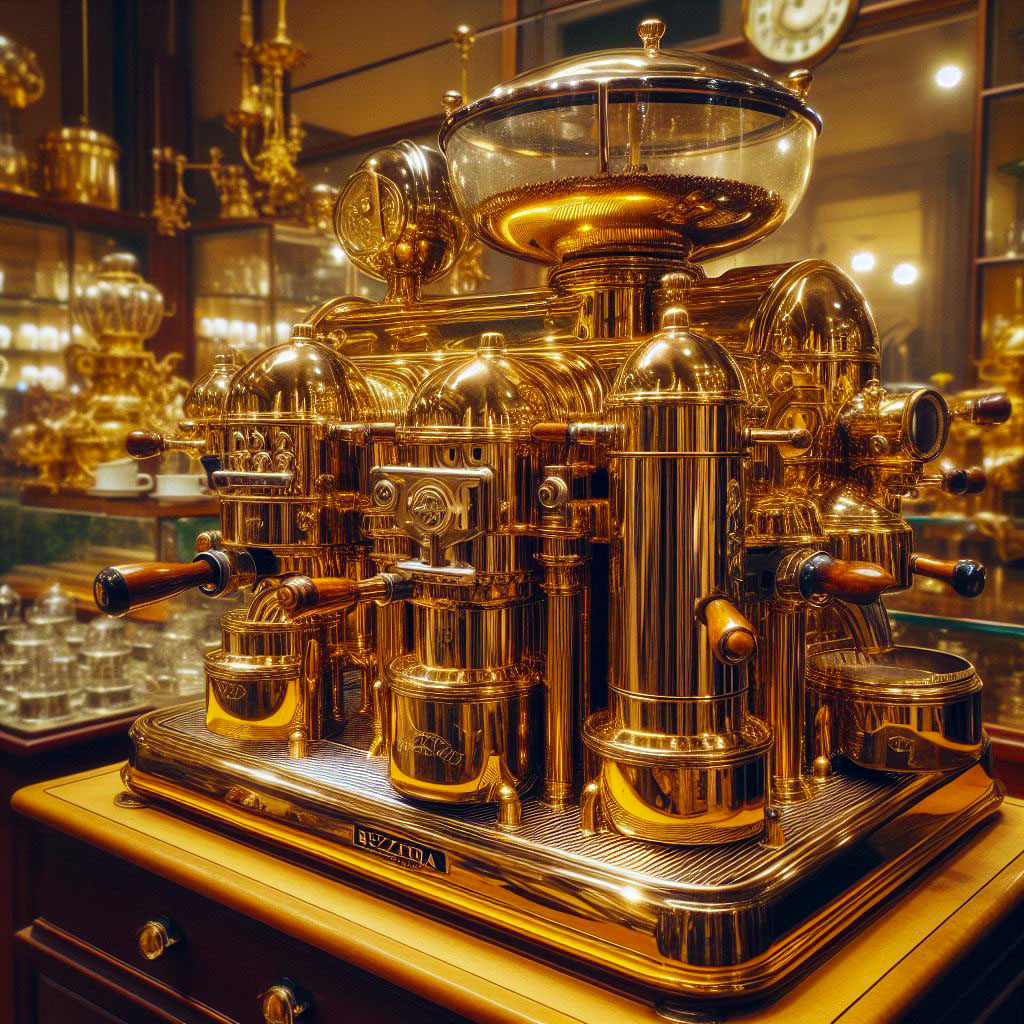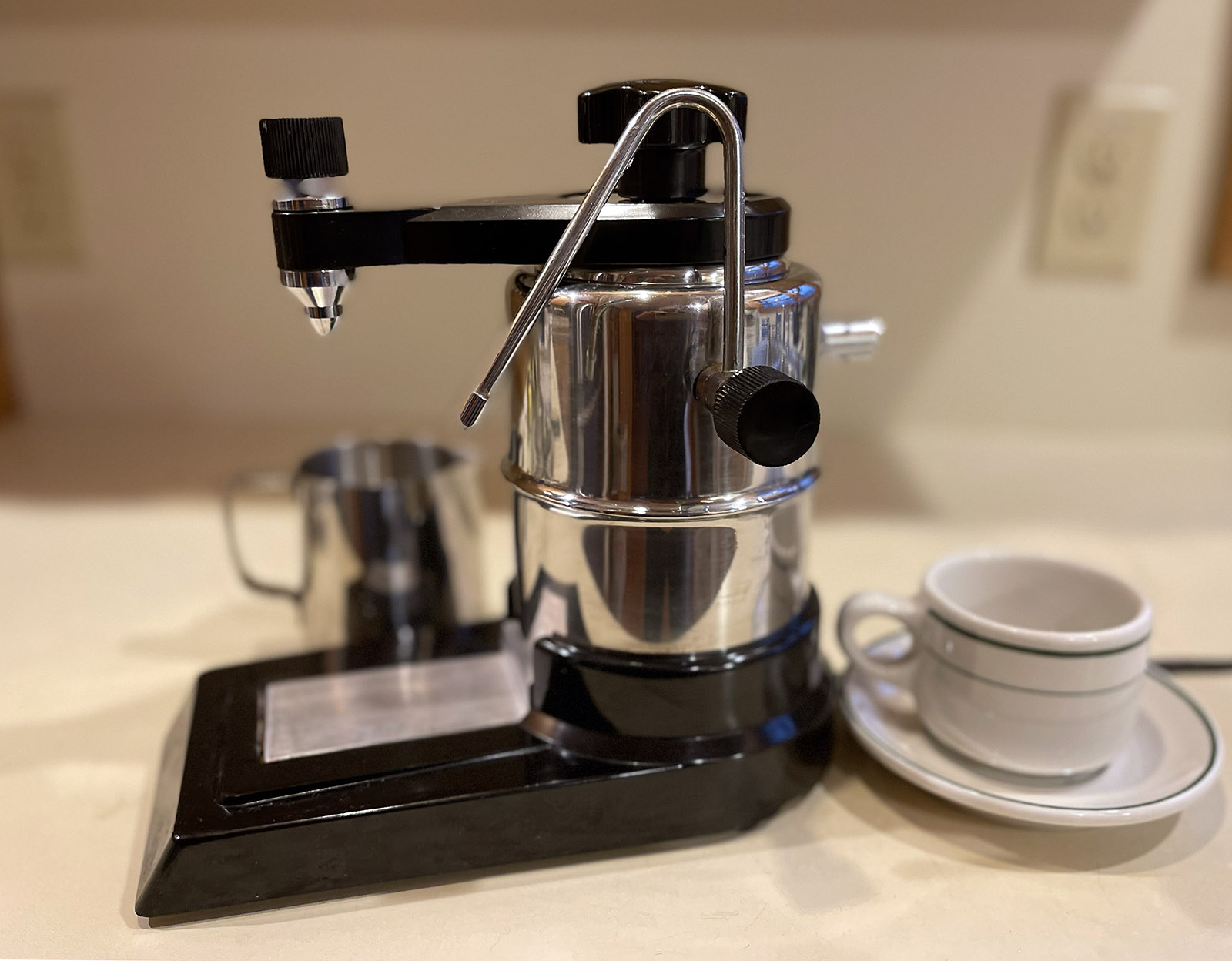
Given any good thing — wine, Scotch, or coffee — there are those who will happily settle for merely good and those who are willing to spend a great deal more for something better. But where does good taste end and snobbery begin? With espresso, my guess would be that the price of real espresso snobbery starts at about $2,000. But merely good can be had for considerably less.
Judged by the shockingly low American standard for coffee, I suppose I have been a coffee snob for many years. I make my morning coffee with the simplest possible method — hot water poured from a kettle into a cone filter, with the coffee going into an insulated decanter. My niece, who has an expensive coffee machine, said, “Wow. You’re old school.” But she liked my coffee. I would argue that the most important factor with coffee is the quality of the coffee itself. The machinery that one uses is less important, as long as one does not use one of those dreadful, ubiquitous coffee machines with which most Americans ruin their coffee by heating it — and thereby scorching it — after the coffee is brewed.
But not until recently did I start to think about how nice it would be to make espresso. Espresso requires a machine, something that can heat the water and send it through the coffee grounds under pressure.
Anyone who likes espresso or who wants to make it at home should read this excellent piece in Smithsonian Magazine — “The Long History of the Espresso Machine.” There are several things in the article that are important to know. First, that the earliest espresso machines were for making coffee, and that they were invented only for the purpose of making lots of good coffee, fast, in European coffee shops. Second, before too long it was discovered that coffee made under pressure was particularly good for some reason. The foamy “crema” that a pressure machine produced was soon seen as a virtue, not merely as scum that was some sort of byproduct of pressure brewing. Third, as snobs went to work and started searching for perfection no matter what it cost, it was discovered that more pressure was better, and that a pump was required, because the amount of pressure that could be safely produced inside a boiler was not enough.
Pressure can be measured in “bars.” One bar is the everyday atmospheric pressure. Two bars is about 28 pounds per square inch. Two to three bars of pressure was all the first espresso machines were capable of. The current consensus of espresso snobs seems to be that nine bars of pressure is ideal for espresso. That’s 130 pounds per square inch, an amount of pressure that is more than sufficient to cause the tires on your car to explode. Espresso snobs love to write about what makes a perfect espresso, and there are many factors beyond nine bars of pressure. But those are the factors that make the difference between espresso machines that cost a mere $400 versus the machines that cost from $2,000 up.
Because I’m perfectly happy with my morning coffee brewed in a cone, I’m not sure that I want to spend even $400 on a machine. There’s also the issue of counter space. As I Googled to educate myself on the snobberies of espresso, I learned that there are simple machines that can make coffee using boiler pressure. Espresso snobs will be quick to point out that, if it’s not made with nine bars of pressure, then it’s coffee, not espresso. Fine. But two to three bars of pressure will make a very fine shot of espresso-like coffee and a respectable amount of crema. Plus you get the ability to steam milk for cappuccino. My little Bellman coffee maker cost about $25, used, on eBay.
For what it’s worth, for years I’ve bought my coffee at Whole Foods from the bulk coffee dispensers. It’s an organic Italian roast and costs $10.99 a pound. I use the same coffee both for morning coffee and for low-pressure espresso. The word “espresso” means only that the coffee is made using pressure. Espresso can be made with any coffee, roasted light, medium, or dark, as long as the beans are ground fine enough to work properly in the pressure-brewing process.



Excellent post. I have found that most coffee (prepared) outside the home is dreck. Weak and insipid with an outlandish price. We prefer making very good strong coffee at home and use a Smeg milk frother. We have considered an espresso machine. The counter real estate it requires has been the reason for not making that purchase.
Hi MHK: It has been two years or more since I had coffee in the outside world, and I was shocked at how undrinkable it was — weak as branch water and made with the sorriest possible coffee beans. It has been more than 15 years, I think, since I went to a Starbucks. Not only was I horrified to find out that their coffee comes only in paper cups, the coffee was undrinkable and tasted like ashes in boiling water. I swore to never go to a Starbucks again, and I haven’t. But that’s the state of American coffee, isn’t it.
I almost bought a Breville Bambino Plus espresso machine when they were on sale at Christmas, but it was the counter space issue that made me decide against it. I don’t feel any need to substitute espresso or cappuccino for my morning plain-coffee, so a machine is not something I would use every day. If you decide to buy a machine, I’d love to hear which machine you choose…
A funny post about coffee, thanks David (el Snob-O). I have a Jura that my wife bought for my BD many years ago. Cost an arm n a leg…I only make a cup of Joe once a day with it. I have made two cappuccinos with it about 3 years ago. A Mellita maker would be really best for my coffee needs, but I did not want to hurt my wife’s feeling re the thoughtful gift.